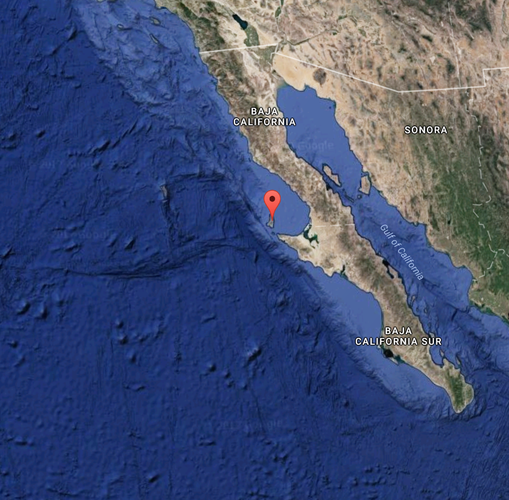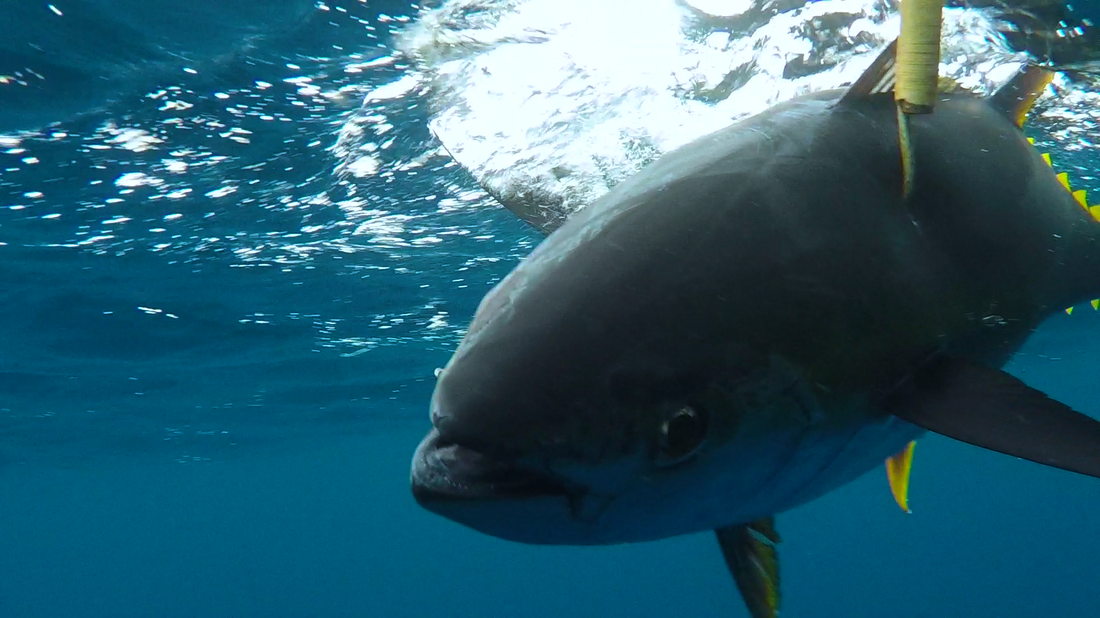Yellowfin Tuna
|
Description: The body of the yellowfin tuna tapers at both ends (cigar-shaped), and the head is conical. The color is dark brownish blue to dark yellow on the back becoming gray or whitish below. Identifying tunas can be difficult, especially when yellowfin and bigeye tuna are involved. In most cases, the length of the pectoral fins can distinguish each species.
|
The yellowfin has pectoral fins which do not extend past the anal fin; while in bigeye, the pectoral fins extend well past the anal fin. Tuna which cannot be distinguished by external characteristics can be positively identified by liver characteristics. The surface of a yellowfin's liver is smooth while the liver of the bigeye is striated, containing many with small blood vessels along the trailing edge.

Range: Widely distributed in the Pacific Ocean. In the eastern Pacific, yellowfin tuna occur from Chile to Point Buchon, California. They occasionally enter California waters when ocean temperatures are warm. They usually are not taken in waters less than 70° F with best catches occurring in waters above 74° F.
Natural History: The diet of the yellowfin tuna includes juvenile fishes, crustaceans, and squid. They are opportunistic feeders taking whatever is most available in the area. Yellowfin tuna do not spawn off the coast of California; however, they do spawn further south in the eastern Pacific. Some spawning takes place during every month of the year, but off Central America it peaks during January and February. Young fish grow very rapidly and by the time they are 1.5 years old they weigh around 7.5 pounds. At 4 years old they weigh approximately 150 pounds. The largest yellowfin tuna taken are 10 or more years old. These larger fish sometimes have an elongated second dorsal fin.
Natural History: The diet of the yellowfin tuna includes juvenile fishes, crustaceans, and squid. They are opportunistic feeders taking whatever is most available in the area. Yellowfin tuna do not spawn off the coast of California; however, they do spawn further south in the eastern Pacific. Some spawning takes place during every month of the year, but off Central America it peaks during January and February. Young fish grow very rapidly and by the time they are 1.5 years old they weigh around 7.5 pounds. At 4 years old they weigh approximately 150 pounds. The largest yellowfin tuna taken are 10 or more years old. These larger fish sometimes have an elongated second dorsal fin.
Fishing Information: Yellowfin tuna are fished in much the same manner as albacore; jigs are used to locate the schools, and live anchovies are chummed to keep the fish around the boat. Most yellowfin tuna taken in California weigh 30 to 50 pounds, fish over 200 pounds are occasionally landed. The smaller fish are 1 to 2 years old while the larger ones may be over 10 years of age.
Other Common Names: Allison tuna, ahi, Pacific yellowfin.
Other Common Names: Allison tuna, ahi, Pacific yellowfin.

